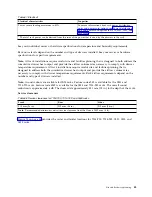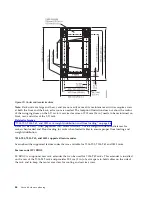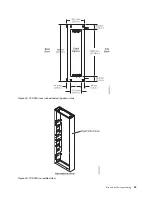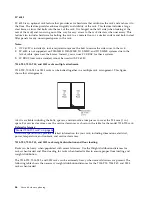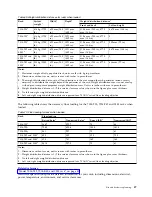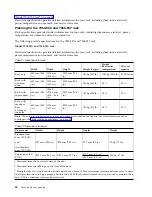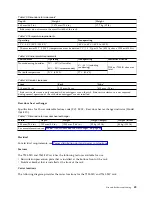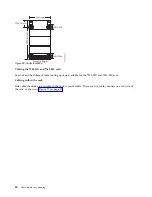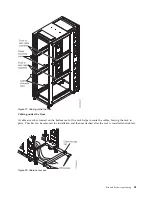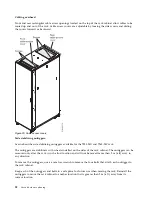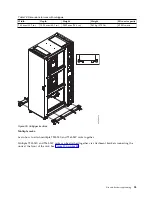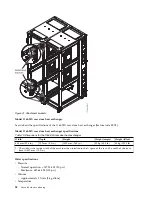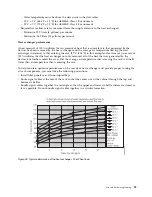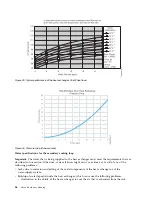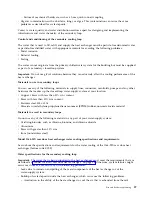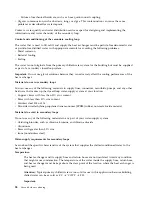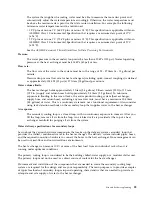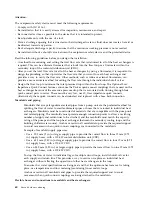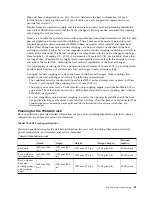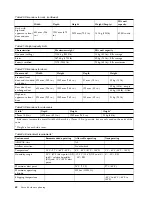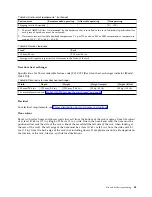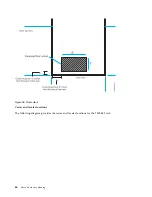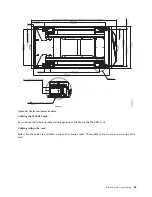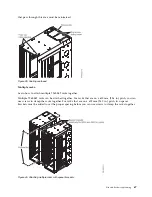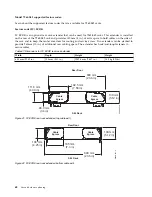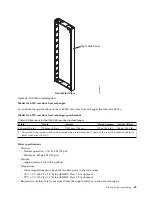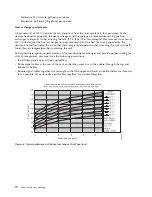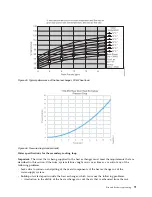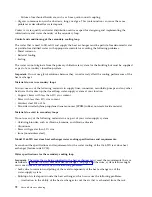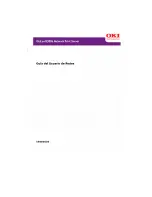
– Failure of mechanical hardware, such as a hose quick-connect coupling
v
Organic contamination, such as bacteria, fungi, or algae. This contamination can cause the same
problems as described for scale deposits.
Contact a water quality and water distribution services expert for designing and implementing the
infrastructure and water chemistry of the secondary loop.
Control and conditioning of the secondary cooling loop
The water that is used to fill, refill, and supply the heat exchanger must be particle-free deionized water
or particle-free distilled water with appropriate controls for avoiding the following problems:
v
Metal corrosion
v
Bacterial fouling
v
Scaling
The water cannot originate from the primary chilled-water system for the building but must be supplied
as part of a secondary closed-loop system.
Important:
Do not use glycol solutions because they can adversely affect the cooling performance of the
heat exchanger.
Materials to use in secondary loops
You can use any of the following materials in supply lines, connectors, manifolds, pumps and any other
hardware that makes up the closed-loop water-supply system at your location:
v
Copper v brass with less than 30% zinc content
v
Brass with less than 30% zinc content
v
Stainless steel 303 or 316
v
Peroxide cured ethylene propylene diene monomer (EPDM) rubber, non-metal-oxide material
Materials to avoid in secondary loops
Do not use any of the following materials in any part of your water-supply system:
v
Oxidizing biocides, such as chlorine, bromine, and chlorine dioxide
v
Aluminum
v
Brass with greater than 30% zinc
v
Irons (nonstainless steel)
Model 1164-95X rear door heat exchanger water cooling specifications and requirements:
Learn about the specifications and requirements for the water cooling of the 1164-95X rear door heat
exchanger (feature code EC05).
Water specifications for the secondary cooling loop
Important:
The water that is being supplied to the heat exchanger must meet the requirements that are
described at: “Model 1164-95X rear door heat exchanger” on page 54. Otherwise, system failures might
occur over time as a result of any of the following problems:
v
Leaks due to corrosion and pitting of the metal components of the heat exchanger or of the
water-supply system.
v
Buildup of scale deposits inside the heat exchanger, which can cause the following problems:
– A reduction in the ability of the heat exchanger to cool the air that is exhausted from the rack
Site and hardware planning
57
Summary of Contents for 8408-44E
Page 1: ...Power Systems Site and hardware planning IBM...
Page 2: ......
Page 3: ...Power Systems Site and hardware planning IBM...
Page 16: ...xiv Site and hardware planning...
Page 18: ...2 Site and hardware planning...
Page 22: ...6 Site and hardware planning...
Page 51: ...Figure 19 Model 0555 and 7014 S25 plan view Site and hardware planning 35...
Page 192: ...176 Site and hardware planning...
Page 204: ...188 Site and hardware planning...
Page 205: ......
Page 206: ...IBM Printed in USA...

